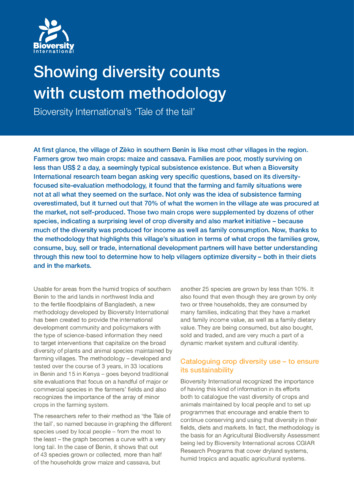Showing diversity counts with custom methodology: Bioversity International’s ‘Tale of the tail’
At first glance, the village of Zèko in southern Benin is like most other villages in the region. Farmers grow two main crops: maize and cassava. Families are poor, mostly surviving on less than US$ 2 a day, a seemingly typical subsistence existence. But when a Bioversity International research team began asking very specific questions, based on its diversity-focused site-evaluation methodology, it found that the farming and family situations were not at all what they seemed on the surface. Not only was the idea of subsistence farming overestimated, but it turned out that 70% of what the women in the village ate was procured at the market, not self-produced. Those two main crops were supplemented by dozens of other species, indicating a surprising level of crop diversity and also market initiative – because much of the diversity was produced for income as well as family consumption. Now, thanks to the methodology that highlights this village’s situation in terms of what crops the families grow, consume, buy, sell or trade, international development partners will have better understanding through this new tool to determine how to help villagers optimize diversity – both in their diets and in the markets.

